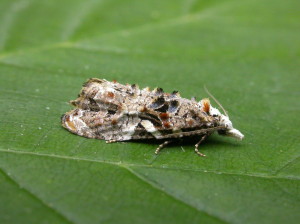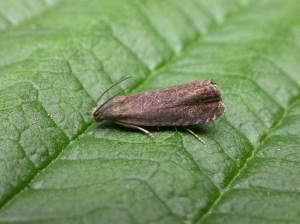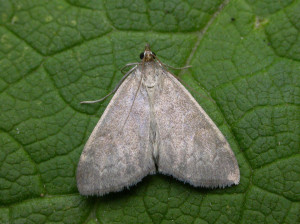I’ve run light traps a few more times since my last posting and here is the news of interest.
Firstly, the common tortrix moths normally seen in their hundreds here have just not got going yet, perhaps apart from Archips xylosteana. A reflection on the poor year I presume. Certainly this year I didn’t notice the ‘rain’ of caterpillar droppings coming from the Oaks that I normally see.
Notables on the 23rd included: Incurvaria oehlmanniella, Blotched emerald (4, having a good year here), Lobster (2), Bactra furfurana, Festoon, Rosy footman (first for year) and Maple prominent. 11 Silver Y were noted at dusk in the garden, none the previous night suggesting an immigration.
24th, traps at home had the following: Festoon (2), Satin wave, Phtheochroa rugosana, Dark sword grass (first for year), Poplar lutestring, Epinotia abbreviana, Coleophora albitarsella and Rhyacionia buoliana. Best moth was found lurking near the bottom of the trap, an Anania fuscalis, a site first and possibly only the second Suffolk record going by the Suffolk moths web site. This must have wandered in some way as there is no Yellow rattle, the foodplant, nearby as far as I know.
On the 25th a small tortrix moth was potted up after being discovered in my greenhouse. This turned out to be Grapholita tenebrosana, another new site record.
A wander around my small wildflower meadow on the 26th resulted in the discovery of a Nemophora fasciella female found feeding on an Oxeye daisy flower. This spectacular micro I’m usually lucky enough to see one of every year around my garden. I do leave plenty of Black horehound for them.
Finally, the 27th was a quieter night for the traps but I did find a male Four-spotted footman at rest on the outside of the trap I had running using a new 20w WEM bulb, not a bad start for it!
Neil



